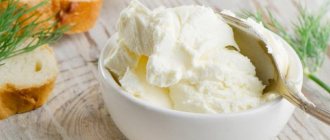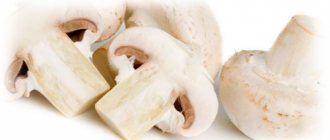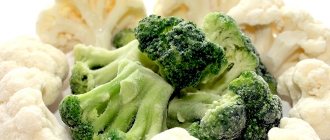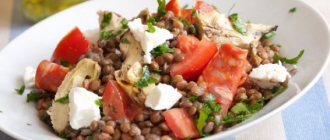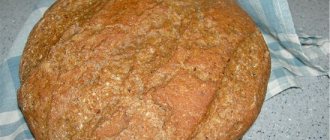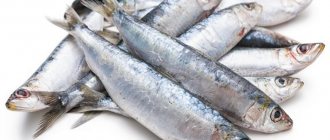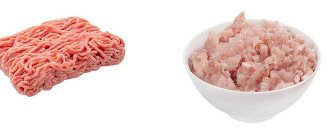Product calorie analysis
SHARE OF BZHU IN CALORIES
Ratio of proteins, fats and carbohydrates:
Knowing the contribution of proteins, fats and carbohydrates to calorie content, you can understand how well a product or diet meets the standards of a healthy diet or the requirements of a certain diet. For example, the US and Russian Departments of Health recommend 10-12% of calories come from protein, 30% from fat and 58-60% from carbohydrates. The Atkins diet recommends low carbohydrate intake, although other diets focus on low fat intake.
If more energy is expended than it is received, the body begins to use up fat reserves, and body weight decreases.
Try filling out your food diary right now without registration.
Find out your additional calorie expenditure for training and get updated recommendations absolutely free.
DATE FOR ACHIEVEMENT OF THE GOAL
Sprats in oil. Canned food
rich in vitamins and minerals such as: vitamin D - 205%, vitamin E - 58.7%, vitamin PP - 26.5%, potassium - 14%, calcium - 30%, magnesium - 13.8%, phosphorus - 43 .8%, chlorine - 57.1%, iron - 11.1%, cobalt - 600%, copper - 16%, molybdenum - 17.1%
- Vitamin D
maintains calcium and phosphorus homeostasis and carries out the processes of bone tissue mineralization. A lack of vitamin D leads to impaired metabolism of calcium and phosphorus in the bones, increased demineralization of bone tissue, which leads to an increased risk of developing osteoporosis. - Vitamin E
has antioxidant properties, is necessary for the functioning of the gonads and heart muscle, and is a universal stabilizer of cell membranes. With vitamin E deficiency, hemolysis of erythrocytes and neurological disorders are observed. - Vitamin PP
is involved in redox reactions of energy metabolism. Insufficient vitamin intake is accompanied by disruption of the normal condition of the skin, gastrointestinal tract and nervous system. - Potassium
is the main intracellular ion that takes part in the regulation of water, acid and electrolyte balance, and is involved in the processes of conducting nerve impulses and regulating blood pressure. - Calcium
is the main component of our bones, acts as a regulator of the nervous system, and is involved in muscle contraction. Calcium deficiency leads to demineralization of the spine, pelvic bones and lower extremities, increasing the risk of developing osteoporosis. - Magnesium
is involved in energy metabolism, the synthesis of proteins, nucleic acids, has a stabilizing effect on membranes, and is necessary to maintain the homeostasis of calcium, potassium and sodium. A lack of magnesium leads to hypomagnesemia, an increased risk of developing hypertension and heart disease. - Phosphorus
takes part in many physiological processes, including energy metabolism, regulates acid-base balance, is part of phospholipids, nucleotides and nucleic acids, and is necessary for the mineralization of bones and teeth. Deficiency leads to anorexia, anemia, and rickets. - Chlorine
is necessary for the formation and secretion of hydrochloric acid in the body. - Iron
is part of proteins with various functions, including enzymes. Participates in the transport of electrons and oxygen, ensures the occurrence of redox reactions and activation of peroxidation. Insufficient consumption leads to hypochromic anemia, myoglobin deficiency atony of skeletal muscles, increased fatigue, myocardiopathy, and atrophic gastritis. - Cobalt
is part of vitamin B12. Activates enzymes of fatty acid metabolism and folic acid metabolism. - Copper
is part of enzymes that have redox activity and are involved in the metabolism of iron, stimulates the absorption of proteins and carbohydrates. Participates in the processes of providing oxygen to the tissues of the human body. Deficiency is manifested by disturbances in the formation of the cardiovascular system and skeleton, and the development of connective tissue dysplasia. - Molybdenum
is a cofactor for many enzymes that ensure the metabolism of sulfur-containing amino acids, purines and pyrimidines.
more hide
You can see the complete directory of the most useful products in the application.
The nutritional value
— content of carbohydrates, fats and proteins in the product.
Nutritional value of food product
- a set of properties of a food product, in the presence of which the physiological needs of a person for the necessary substances and energy are satisfied.
Vitamins
, organic substances required in small quantities in the diet of both humans and most vertebrates. Vitamin synthesis is usually carried out by plants, not animals. A person's daily requirement for vitamins is only a few milligrams or micrograms. Unlike inorganic substances, vitamins are destroyed by strong heat. Many vitamins are unstable and are “lost” during cooking or food processing.
Canned sprats are made from small sea fish of the herring family, mainly from the sprats themselves, sprat or herring. Riga is considered the birthplace of the product. Canned sprats began to be produced at the end of the 19th century. It is interesting that today many fish products are called sprats, although in fact sprats are a type of fish.
It is necessary to distinguish between industrially produced sprats and culinary products of the same name. Homemade sprats are basically fish dishes that simply visually resemble those same, legendary and well-known canned food.
How sprats are made
At the initial stage, fish of the required size and quality is selected. According to GOST, only whole fish, without any defects, ranging in size from 9 to 20 cm are suitable for the production of canned Sprats. Next, thermal treatment occurs with hot air and steam. The fish is then smoked. Some manufacturers smoke in the natural sense of the word - they buy shavings of deciduous trees, from which they obtain smoke for smoking. But in the vast majority of cases, liquid smoke and special chemicals are used for smoking.
Smoked fish is cooled and placed in a special glass or metal container, salt and sunflower oil are added. They're rolling up. After 30 days, the canned food is ready to eat.
What are sprats made from?
Fortunately, the absence of sprats in canned food does not mean that there are chemical additives there. Canned food is always made from natural fresh fish with the addition of vegetable oil, salt and spices. Manufacturers place any small fish that is suitable in size into sprats. If the fish fits completely into the can, then it can rightfully be called “sprats”. It is not surprising that anchovies, sprat, herring and even small herring are often found in jars under the guise of sprat. If you examine the packaging of the sprats you buy, you will notice a note that there is another fish inside.
From the point of view of nutritional properties and composition, there is nothing wrong with replacing sprats with other fish. All small representatives of the aquatic world are similar to each other. If you want to taste canned sprats, then you are looking for Baltic brands. The Baltic Sea has a very large population of European sprat and there is no need for producers there to replace them with other fish species. Sprats are also found in the Black Sea, and therefore canned food produced in the Black Sea regions can be trusted. But canned sprat from the Caspian Sea is almost always sprat.
Most often, it is not even profitable for manufacturers to replace one type of fish with another, and therefore in most cases the name of the canned food corresponds to its filling. Recently, the production of canned fish has become more controlled. So, when buying sprats, there is a 90% chance that they will be in the jar.
Calorie content of sprat
The calorie content of sprats is 363 kcal per 100 grams.
Useful properties of sprats
The product is rich in vitamins A, E, B1, B2, PP. It contains micro- and macroelements useful for the human body: phosphorus, fluorine, potassium, magnesium, iodine, iron, calcium and many others. It is recommended to eat sprats to prevent diabetes and strengthen the musculoskeletal and cardiovascular systems. There is an opinion that sprats stimulate brain function and have sedative properties, that is, they can improve a person’s mood.
During the smoking process, a large number of carcinogens are formed in the product. These substances are extremely difficult to remove from the body and can cause certain diseases, including cancer. One of the most well-known carcinogens is benzopyrene, which is also released when tobacco is burned. 100 grams of low-quality sprats can be equal to 4-5 cigarettes in terms of benzopyrene content.
Excessive consumption of sprats can negatively affect the functioning of the liver and kidneys. Sprats are contraindicated for gout, urolithiasis and many other diseases. The product may cause allergies.
What to look for when buying sprat
Naturally, first of all you need to pay attention to the expiration date. But it’s also a good idea to look at the production date. It is best to buy sprats that were produced in the autumn. Fish at this time of year is tastier, more plump and juicy.
The lid of the canned food should be smooth, without bulge. It is more reasonable to buy sprats in glass containers. Thus, the option of buying mint fish is eliminated.
You should pay attention to the stated composition of the product. High-quality sprats contain nothing except fish, sunflower oil and salt. Everything else is usually chemistry.
What to cook with sprats
Sprats are well suited for making sandwiches, croutons, salads, and cold appetizers. They go well with almost any vegetables, with lemon, pickled and pickled cucumbers, with black and white bread. Sprats are often bought for the holidays, so their presence on the table in itself can create a special atmosphere.
Popular sprats are traditionally called canned fish like “mass grave”, which have an outstanding taste and smell, reminiscent of the taste of dry smoked fish.
Moreover, from a scientific point of view, sprats are one of the types of marine fish suitable for canning. And no matter how strange it may seem, they will not necessarily end up in the sprats bank.
It’s worth immediately reassuring those who are worried about their own health: there are practically no terrifying chemicals and various kinds of e-additives in sprats. Canned food is made by adding salt, spices and vegetable oil to fresh fish.
As for the type of fish placed in a tin container, manufacturers are generally rarely picky - the main thing is that the sea creatures are the right size and fit in the jar. Only in this case canned food can rightfully be called “sprats”. Therefore, you should not be surprised that sprat, herring, anchovy and even small herring are often found in jars under the guise of sprat.
Based on a purely dietary point of view, there are no negative consequences from replacing sprats with other small sea fish: in terms of their own usefulness and nutritional value, other species rarely differ from sprats, and in certain characteristics they are even superior.
You can be sure that real sprats are used in the Baltics: the Baltic Sea is rich in large populations of European sprat, so local producers simply do not need to replace them with other types of fish.
Sprats are also found in the Black Sea, so there is no reason not to trust canned food that was produced in the Black Sea regions. As for canned food from the Caspian Sea, in 9 out of 10 cases you will find sprat in the jars.
Calorie content of sprats is 363 kcal. It also contains proteins - 17.4 g, carbohydrates - 0.4 g, fats - 32.4 g.
Manufacturers themselves often simply cannot benefit from replacing one type of fish with another, therefore, in the lion's share of cases, the name of the canned food justifies its contents. In our country, recently the production of canned fish has been more carefully regulated, so that in a jar of domestic sprats, with the greatest degree of probability, it will be possible to find them.
The properties of sprats in the form of smoked canned food ensure their appreciation, if not as a basis, then as an important part of the diet. Eg:
1. Any small sea fatty fish contains the entire set of amino acids essential for the body. This means that sprats can replace meat.
2. The composition of sprat is enriched with B-group vitamins, vitamins A, D. Considering that almost no heat treatment is used in their creation, this complex remains almost in its original form.
3. Sprats have a high calorie content. The fish itself contains a lot of fat, and the addition of oil determines the energy value of the product. However, on the other hand, overweight people are unlikely to be happy about this.
4. People who suffer from gout should not eat sprats, as they contain a lot of purine bases.
5. Benzopyrene may be present in sprats. Be that as it may, there is more of it in European sprats than in domestic ones. Benzopyrene itself is an oncological agent. Therefore, if you choose sprats, it is better to buy Russian ones.
When calculating the calorie content of any dish, it is worth remembering that you need to take into account how many calories are in each of its ingredients. The same goes for any canned food. And the calorie content of sprat in oil also needs to be calculated step by step.
Useful properties of sprats
Sprats are of great benefit due to their amino acid content and easily digestible protein. Fish tissue contains fatty acids that normalize the activity of the cardiovascular system, improve blood circulation in the brain, relieve symptoms of depression and help restore joints in various diseases.
Sprats are a source of vitamins A, B and E, as well as minerals such as phosphorus, chromium, calcium and potassium.
Regular consumption of this fish allows you to prevent diabetes, osteoporosis, arthritis and thrombosis.
Canned sprat contains a large amount of fat and is rich in macroelements such as sodium, chlorine and magnesium, as well as microelements (zinc, fluorine, iron). These beneficial substances stabilize blood glucose levels, strengthen blood vessels and prevent the formation of malignant tumors. Vitamins D, E, PP, B6, B2 and B9 have a positive effect on cell regeneration, brain functioning and skin condition. Sprats also contain Omega-3 fatty acids, which normalize cholesterol levels.
Are there sprats in the jar?
The sharp decline in the sprat population is forcing the producers of this canned food to resort to some tricks. So, you can find herring, sprat or even sprat in a jar. But today, sprats in oil are more a way of preparing this or that fish, rather than its variety. Although it is worth noting that in Russia sprat fishing is quite active and therefore this small fish is often included in canned food.
The length of one individual reaches approximately fifteen centimeters. And its weight does not exceed 11-12 g. But even with such modest parameters, sprats contain a huge amount of useful microelements. Among them we can list such as iron, magnesium, fluorine, zinc and various vitamins.
Sprat production technology
To obtain canned sprat, you do not need huge industrial workshops and equipment. Small fish are washed in fresh water and the head is separated from it. It is sent to be smoked in special units using smoke, and then transferred to jars, which are filled with oil and spices. All packages are tightly closed and sent to stores. Often, the entire process of preparing sprat takes place on a ship on the open sea, since transporting the catch to the shore is a rather lengthy and expensive process, fraught with damage to the fish itself.
Many countries have abandoned smoke smoking and have chosen to use a special oil called “liquid smoke.” This composition gives the fish the same taste that it acquires during conventional smoking, but prevents the formation of benzopyrene, an aromatic hydrocarbon that has carcinogenic properties. Liquid house is a concentrate of fire smoke from which substances hazardous to humans have been removed. therefore, there is no need to be afraid of sprats prepared with the addition of liquid smoke. The additive is harmless and completely natural, since it is produced without the use of synthetic components. But in Western Europe, fish still continues to be smoked over fire.
Calorie content
Oddly enough, this type of fish is considered dietary. The calorie content of sprat in oil has nothing to do with the calorie content of individual fish. If it is possible to purchase this baby fresh, then you can consume it completely without fear. There are only 135 kcal per hundred grams of product. But it is worth remembering that in any meal it is important to know when to stop. Otherwise, even the most dietary product will only cause harm to your body.
But if you add vegetable oil to the fish, which is included in large quantities in the canned food, then the fat content will increase significantly. Thus, sprats in oil will have a caloric content of 370 kcal per 100 grams.
Sprats
- Potassium 350 mg
- Calcium 300 mg
- Magnesium 55 mg
- Sodium 635 mg
Sprats are well-known canned fish with an amazing smell and taste, which many rate even higher than the taste of dry smoked fish. However, any scientist will tell you that sprats are one of many types of small marine fish that are suitable and used for canning. But, despite the play on words, in a jar of sprats there may not be sprats at all, but other small fish.
Cooking sprats
In Europe, sprats became most popular in the form of canned food. When making them, the fish are sorted, leaving only whole and firm ones, and small and damaged fish are sifted out for pate. Selected fish are processed and then smoked in special workshops and placed in cans. In summer, the fish has a large fat reserve, so it is placed in jars with its belly up. Vegetable oil is also poured into the container and sent for sterilization.
Their taste and aroma, as well as their integrity and shelf life, depend on the correct preparation of sprats. After some time of storage, the oil permeates the sprats, and they acquire a special pleasant taste. Experts note that sprats that have been in jars for a year will taste better, rather than freshly prepared canned food.
Currently, the Baltic species of this fish has noticeably decreased, so other types of fish are often used in the production of canned food: sprat, herring and sprat. Therefore, the name of canned food began to personify not the type of fish, but the method of its preparation.
With proper preparation of sprats and the necessary sequence of technologies, the fish in the jar does not crumble, does not have swollen skin and is not overdried. If, when you open canned food, the fish is whole with a golden hue and laid out in an even row, then it is a quality product. The canned food contains fish, vegetable oil and salt.
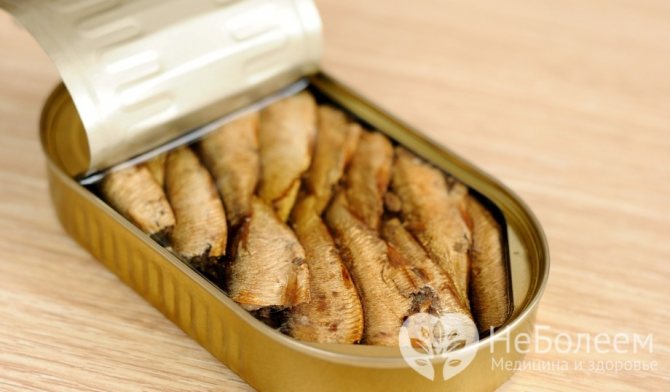
Sprats can be eaten not only in the form of canned food; they can be used to prepare fish soup, various fish dishes, cutlets, sandwiches and sandwiches, and salads.
With regular consumption of this fish, the aging process slows down and the body is saturated with the necessary amount of vitamin E, and metabolic processes are normalized.
Sprats
Sprats are marine fish from the herring family, which reach a length of up to 18 cm and have a body weight of up to 15 g. Sprats have gray scales with a silvery tint. This fish feeds on zooplankton, reaches full maturity at 2 years and lives up to 6 years.
| The nutritional value | ||||||||||
| Amount per serving | ||||||||||
|
Recipe
In Russia there is a snack that has remained relevant for several decades. If previously it was quite difficult to get a jar of sprat in oil to prepare it, now you can enjoy it at any time.
- To prepare it, you need to fry the bread in vegetable oil (its type does not matter). Just the formation of a crispy crust is enough; there is no need to fry the bread too much.
- Then you need to grate the garlic. Each piece of bread should be coated with it and placed on a plate. Grease with a thin layer of mayonnaise. You can use salty, creamy cheese instead of mayonnaise. For example, fetaxa is perfect.
- Next, place a thin slice of pickled cucumber on the bread. But if you used cheese, then you don’t need to add cucumber, because the snack can become very salty.
- Then - the sprats themselves, 1-2 fish for each sandwich. It all depends on their size.
- And finally, decorate with greenery. It would be best to add green onions. Despite the simplicity of the ingredients, the appetizer itself turns out to be very interesting and festive. Although it is quite suitable for a regular family dinner.
The calorie content of sprat in oil should not force people to refuse to eat this fish. You can change this very calorie content by preparing any product in a different way, avoiding fatty sauces and oil. Today on the Internet it is very easy to find many recipes for any product: be it sprats or any other favorite fish.
Sprats in oil are canned fish known in Russia, which are made from Baltic sprats (currently sprats can be found from Caspian sprat, herring, young herring and other small fish). During the cooking process, sprats are smoked and preserved in oil, so the fish retains a strong smoky flavor.
What are the benefits of sprats in oil?
Sprats are considered one of the foods with a high purine content, the most important substance found in all living objects. Therefore, people who suffer from gout or have high levels of uric acid in the blood should avoid consuming this product. The most important advantage of sprats is the content of polyunsaturated fatty acids, including eicosapentaenoic and docosahexaenoic acid. The approximate content of these acids in sprat is 1.43 g/100 g. Their use helps prevent mental, neurological and cardiovascular diseases. In addition, although sprats in oil are a canned type of product, the content of polyunsaturated fatty acids in them may exceed some fresh products.
Calorie table for sprat in oil (per 100 g):
Storage: Temperature from 4 ° C to 25 ° C at a relative humidity of no more than 80%.
Calorie or energy value
– this is the amount of energy that accumulates in the human body due to food and is consumed due to physical activity. The unit of measurement is the kilocalorie (the amount of energy required to raise one kilogram of water by one degree Celsius). However, a kilocalorie is often referred to simply as a calorie. Therefore, when we say a calorie, in most cases we mean a kilocalorie. It has the designation kcal.
The nutritional value
– content of carbohydrates, fats and proteins in the product.
Chemical composition
– content of macroelements and microelements in the product.
Vitamins
are organic compounds needed in small quantities to maintain human life. Their deficiency can have adverse effects on the health of the body. Vitamins are found in food in small quantities, so to get all the vitamins a person needs, you need to diversify the groups and types of food.
CHEMICAL COMPOSITION AND NUTRITIONAL ANALYSIS
Nutritional value and chemical composition of “Sprats in oil. Canned food."
The table shows the nutritional content (calories, proteins, fats, carbohydrates, vitamins and minerals) per 100 grams of edible portion.
| Nutrient | Quantity | Norm** | % of the norm in 100 g | % of the norm in 100 kcal | 100% normal |
| Calorie content | 363 kcal | 1684 kcal | 21.6% | 6% | 464 g |
| Squirrels | 17.4 g | 76 g | 22.9% | 6.3% | 437 g |
| Fats | 32.4 g | 56 g | 57.9% | 16% | 173 g |
| Water | 47.1 g | 2273 g | 2.1% | 0.6% | 4826 g |
| Ash | 3.1 g | ~ | |||
| Vitamins | |||||
| Vitamin A, RE | 30 mcg | 900 mcg | 3.3% | 0.9% | 3000 g |
| Retinol | 0.03 mg | ~ | |||
| Vitamin B1, thiamine | 0.03 mg | 1.5 mg | 2% | 0.6% | 5000 g |
| Vitamin B2, riboflavin | 0.1 mg | 1.8 mg | 5.6% | 1.5% | 1800 g |
| Vitamin B5, pantothenic | 0.2 mg | 5 mg | 4% | 1.1% | 2500 g |
| Vitamin B6, pyridoxine | 0.13 mg | 2 mg | 6.5% | 1.8% | 1538 g |
| Vitamin B9, folates | 15.5 mcg | 400 mcg | 3.9% | 1.1% | 2581 g |
| Vitamin C, ascorbic acid | 1.5 mg | 90 mg | 1.7% | 0.5% | 6000 g |
| Vitamin D, calciferol | 20.5 mcg | 10 mcg | 205% | 56.5% | 49 g |
| Vitamin E, alpha tocopherol, TE | 8.8 mg | 15 mg | 58.7% | 16.2% | 170 g |
| Vitamin RR, NE | 5.3 mg | 20 mg | 26.5% | 7.3% | 377 g |
| Niacin | 2.4 mg | ~ | |||
| Macronutrients | |||||
| Potassium, K | 350 mg | 2500 mg | 14% | 3.9% | 714 g |
| Calcium, Ca | 300 mg | 1000 mg | 30% | 8.3% | 333 g |
| Magnesium, Mg | 55 mg | 400 mg | 13.8% | 3.8% | 727 g |
| Sodium, Na | 635 mg | 1300 mg | 48.8% | 13.4% | 205 g |
| Sera, S | 174 mg | 1000 mg | 17.4% | 4.8% | 575 g |
| Phosphorus, Ph | 350 mg | 800 mg | 43.8% | 12.1% | 229 g |
| Chlorine, Cl | 1313 mg | 2300 mg | 57.1% | 15.7% | 175 g |
| Microelements | |||||
| Iron, Fe | 2 mg | 18 mg | 11.1% | 3.1% | 900 g |
| Cobalt, Co | 60 mcg | 10 mcg | 600% | 165.3% | 17 g |
| Manganese, Mn | 0.2 mg | 2 mg | 10% | 2.8% | 1000 g |
| Copper, Cu | 160 mcg | 1000 mcg | 16% | 4.4% | 625 g |
| Molybdenum, Mo | 12 mcg | 70 mcg | 17.1% | 4.7% | 583 g |
| Nickel, Ni | 14 mcg | ~ | |||
| Sterols (sterols) | |||||
| Cholesterol | 72 mg | max 300 mg | |||
| Saturated fatty acids | |||||
| Saturated fatty acids | 6.3 g | max 18.7 g |
Energy value of Sprats in oil. Canned food is 363 kcal.
Main source: Skurikhin I.M. and others. Chemical composition of food products. .
** This table shows the average levels of vitamins and minerals for an adult. If you want to know the norms taking into account your gender, age and other factors, then use the My Healthy Diet app.
